KYLE MIZOKAMI
On October 8, just hours after the unprecedented attack on Israel, the Pentagon very publicly reached for its biggest stick. As pitched gun battles between Israeli forces and Hamas terrorists continued across southern Israel, Secretary of Defense Lloyd Austin ordered the aircraft carrier USS Gerald R. Ford into the eastern Mediterranean Sea.
The deployment made it crystal clear that the U.S. had taken notice of the crisis and was preparing to respond. It also made it clear that—despite recent pronouncements questioning their worth given their staggering cost and vulnerability— aircraft carriers are still very much a part of modern warfare.
A Century at the Top
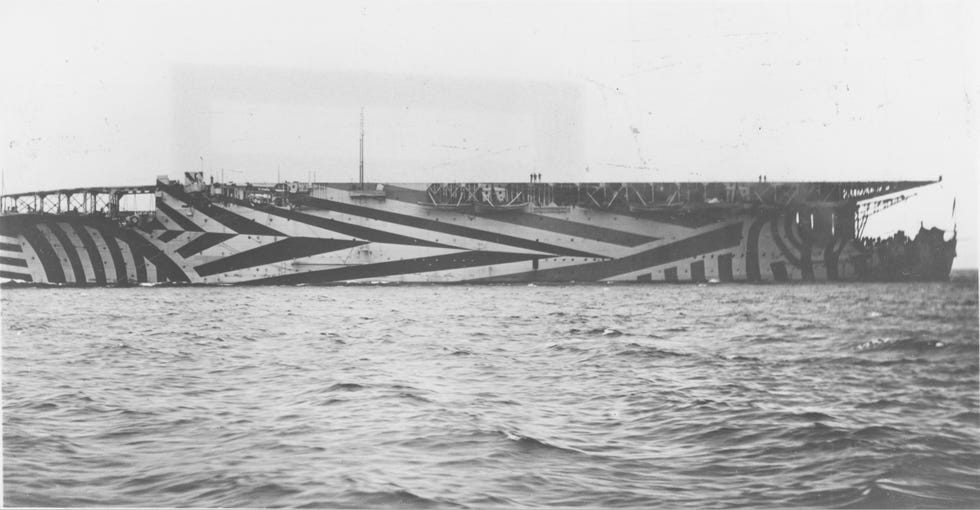
HMS Argus, widely considered the world’s first aircraft carrier, in zebra camouflage.
The aircraft carrier is just over one hundred years old. First conceived as a scout for battleships to locate the enemy fleet with its aircraft, the Imperial Japanese Navy demolished that concept during World War II, teaming multiple carriers together to create a strike force with longer range and heavier striking ability than a line of battleships. The attack on Pearl Harbor, when six aircraft carriers struck the U.S. Pacific Fleet in Hawaii, catapulted the carrier to the top as the dominant weapons system of the seas.
Once a weapon reaches the top of its domain, it’s natural to assume that someday its reign will end. The Greek phalanx, the knight, the ironclad, the battleship, and other weapons have dominated on land and sea, only to be pushed aside—violently and unceremoniously—by a new and innovative weapon. Aircraft carriers have hung on at the top of multi-domain warfare for more than 80 years, and a new weapon hasn’t even been conceived of yet that could replace it.
“4.5 Acres of Sovereign American Territory”
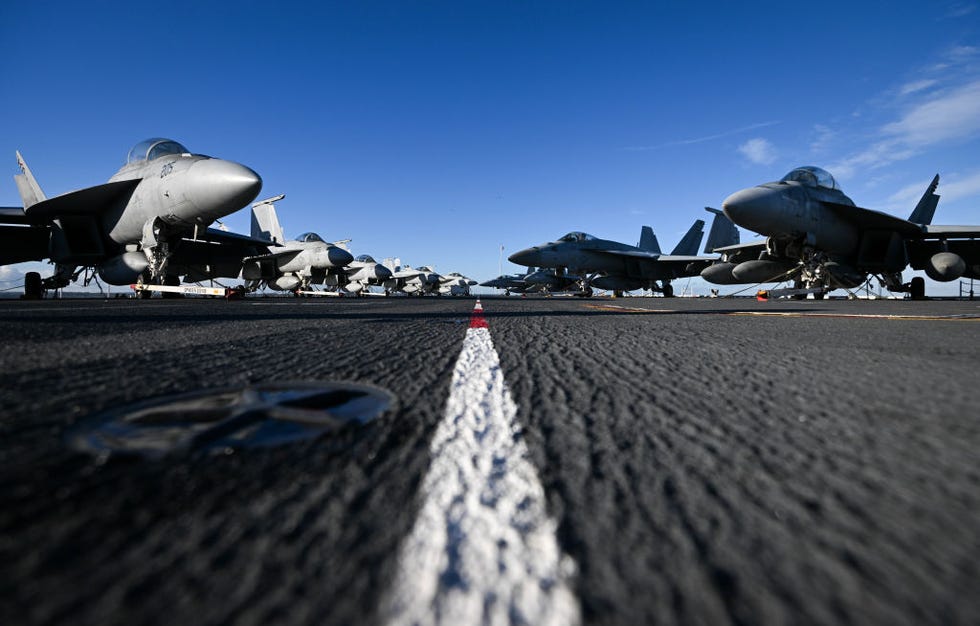
The deck of an aircraft carrier is a tool unmatched in modern warfare and diplomacy.
The admirals like to point out that a Nimitz- or Ford-class aircraft carrier is “4.5 acres of sovereign American territory.” Aircraft carriers are U.S. government property and are so big that they are effectively American territory—a floating island of American power that can relocate to anywhere in the world’s oceans. Furthermore, wherever they go they remain American territory, their actions constrained by none except the U.S. government… and the enemy.
This advantage is particularly apparent in the Israel-Gaza crisis. The U.S. military maintains air bases worldwide, but coverage is spotty. The nearest American air base to Israel is Incirlik air base in Turkey, a distance of 300 miles away. Aircraft flying from Turkey to Israel would also have to fly past Syria, a hostile country with an air force of its own. Giving Syria a wide berth would require flying about 100 extra miles and fighter escorts, adding to the complexity of reaching Israel. A whole other layer of complexity is that the Turkish host government may not politically see eye to eye with the U.S. government on the mission.
The aircraft carrier USS Gerald R. Ford, on the other hand, can sit in international waters off the coast of Israel and get as close as it wants (though not too close, since Hezbollah operates anti-ship missiles). Ford’s four squadrons of F/A-18E/F strike fighters have a straight, uninterrupted line to any point on the coast of the eastern Mediterranean. The U.S. government can order the Ford to do anything it wants, including ordering it into combat, without the need to coordinate with a host government. This ensures the U.S. government, not exactly known for making quick decisions, can rapidly take unilateral action when necessary.
A Versatile Instrument
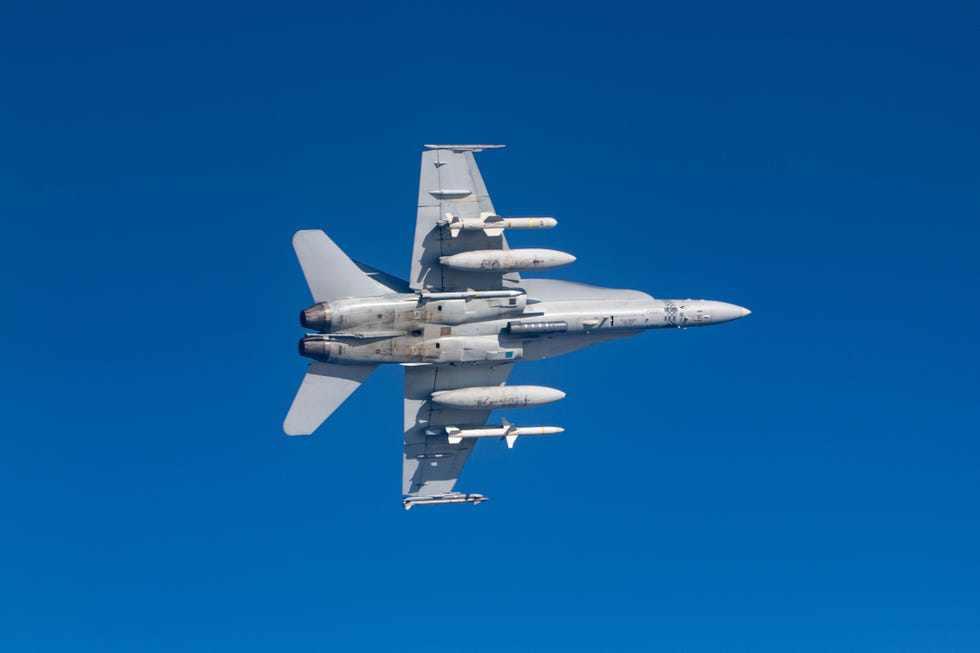
A Marine Corps F/A-18D Hornet carries a Harpoon anti-ship missile. The ability to simply switch munitions on a strike fighter allows an aircraft carrier to rapidly reorient from airstrikes on undefended targets to warships with their own air defense systems.US Marine Corps
Today’s role of aircraft carriers includes conducting air strikes against terrorist groups like ISIS, Hezbollah and Hamas, and dropping guided bombs on enemies that can’t really shoot back. That’s been true for 20 years, as the end of the Cold War and 9/11 shifted the Pentagon’s focus from big power warfare to counterinsurgency. But while the mission has shifted, the broad capabilities have remained the same, and carriers are still capable of engaging threats on a broad spectrum, from ISIS to China’s People’s Liberation Army.
Combat isn’t the only mission aircraft carriers can accomplish. Carriers can undertake humanitarian assistance and disaster relief missions on the fly, such as those the USS Ronald Reagan carried out in the aftermath of the Fukushima earthquake in 2011. As Japan and the United States mobilized to rescue survivors and survey damage, Reagan served as a floating heliport for helicopters from both countries in an area where local airports and airfields were knocked out by earthquake and tsunami damage. Nothing else can function as a mobile, disaster-proof airfield like an aircraft carrier.
The ‘Big Stick’
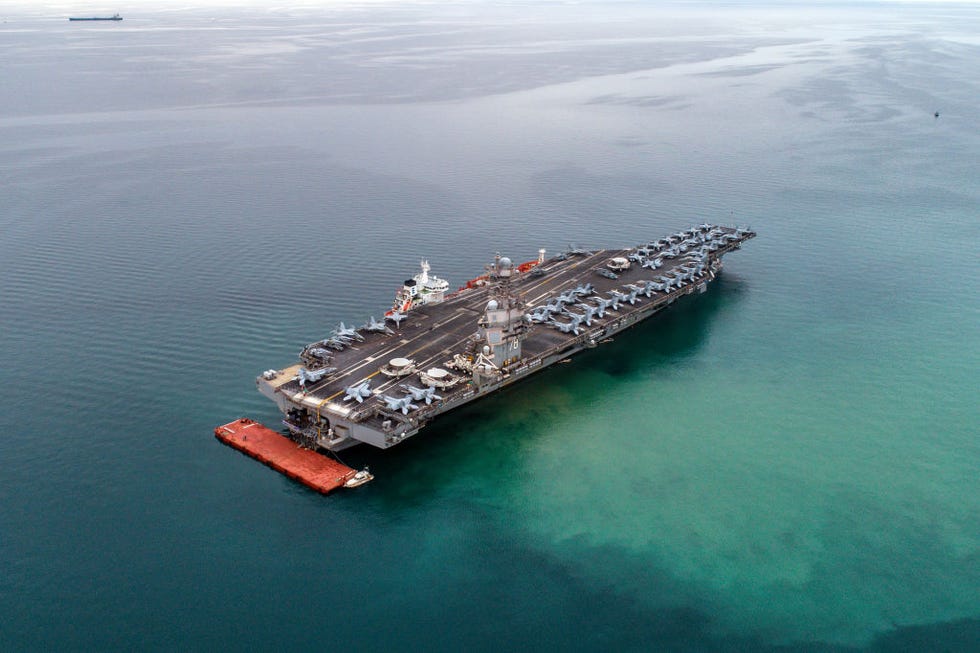
The USS Gerald R. Ford, the largest warship in the world, anchored in the Gulf of Trieste, Italy, on September 18, 2023.
The U.S. government uses aircraft carriers to communicate to friends and enemies alike, both as an instrument of reassurance and intimidation. Although aircraft carriers had not yet been invented when Teddy Roosevelt first said, “speak softly and carry a big stick,” they are the big stick exemplified. Nothing grabs attention like a full-fledged carrier strike group rolling into the neighborhood, with 44 strike fighters, a cruiser, and two destroyers in tow, and a nuclear-powered attack submarine prowling somewhere nearby.
Carriers can signal intent like no other weapon system. If an attack submarine shows up off your coast, you’d probably have no idea it’s there. If a B-2 stealth bomber crew is training to strike targets in your country, you won’t know unless they execute the mission. But if an aircraft carrier shows up on your coastline, it’s impossible to miss. It is also a clear sign that you are on Washington’s radar—and not in a good way.
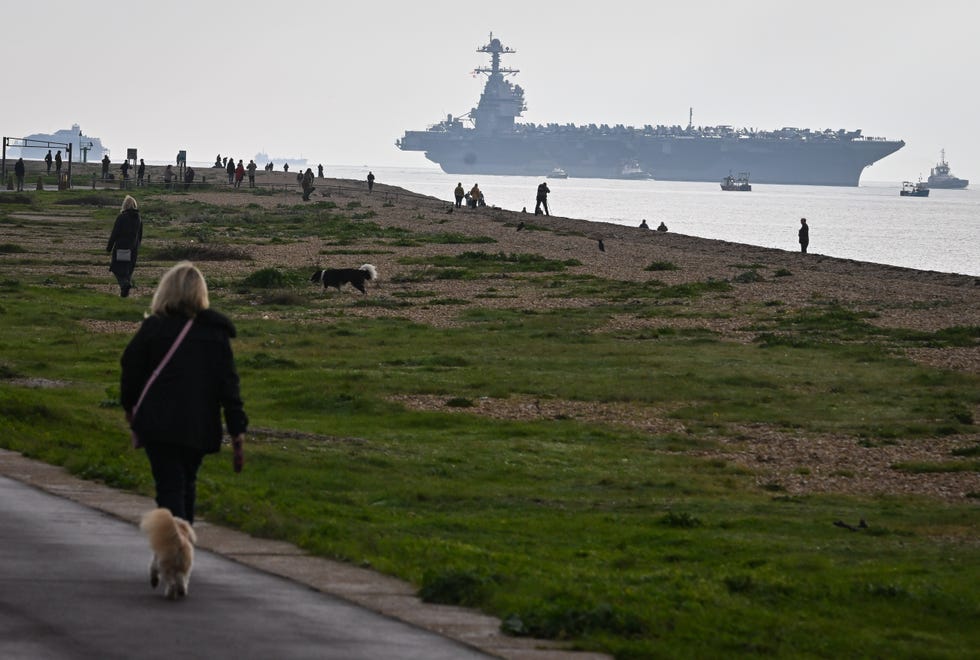
The USS Gerald R. Ford arrives in Gosport, England, on November 14, 2022.
The Takeaway
Every once in a while the utility of aircraft carriers is called into question. Typically, it’s just a matter of months before something, like the ongoing crisis in Israel and Gaza, happens to prove their usefulness again.
Carriers do have their problems: they are expensive to buy, expensive to operate, and expensive to dispose of once their service lives are over. Still, in a crisis, there is no other weapon system that can do so much before it even fires a shot. Someday, something will replace the carrier—but that day is not today.
No comments:
Post a Comment